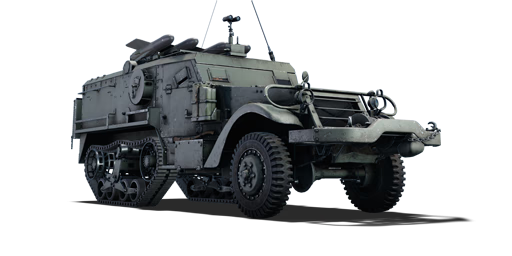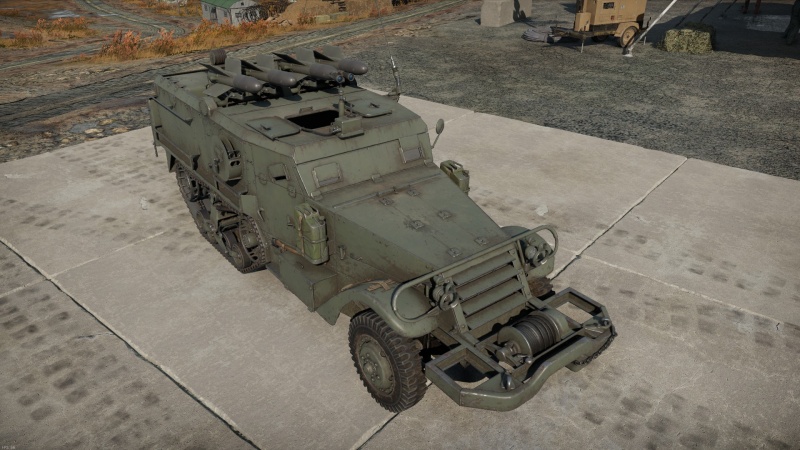Difference between revisions of "Zachlam Tager"
(→History) |
Colok76286 (talk | contribs) (Edits) |
||
| Line 133: | Line 133: | ||
== History == | == History == | ||
| + | <!-- ''Describe the history of the creation and combat usage of the vehicle in more detail than in the introduction. If the historical reference turns out to be too long, take it to a separate article, taking a link to the article about the vehicle and adding a block "/History" (example: <nowiki>https://wiki.warthunder.com/(Vehicle-name)/History</nowiki>) and add a link to it here using the <code>main</code> template. Be sure to reference text and sources by using <code><nowiki><ref></ref></nowiki></code>, as well as adding them at the end of the article with <code><nowiki><references /></nowiki></code>. This section may also include the vehicle's dev blog entry (if applicable) and the in-game encyclopedia description (under <code><nowiki>=== In-game description ===</nowiki></code>, also if applicable).'' --> | ||
| + | As part of its armament process leading up to and during the 1948 War of Independence, the armoured corps of the Israeli Defense Force (IDF) acquired a large number of WW2 surplus M2, M3, M5 and M9 halftracks from a variety of sources. These vehicles rapidly became the IDF's primary armoured personnel carriers for mechanized infantry units, and participated in every Israeli war until their eventual replacement by the [[M113 (Family)|M113]]. | ||
| − | + | While the Allies had experimented with a variety of different weapon mounts for these halftracks during the war, Israel continued to do so in the late 1940s and early 1950s, mostly using French and locally-produced weapons. Halftracks with cannons, howitzers and mortars became commonplace, and were used as fire support for both armoured units and mechanized infantry units. | |
| − | + | The development of the French SS.11 anti-tank guided missile in the 1950s greatly intrigued the Israelis, and they decided to acquire large quantities of the weapon system. Among other implementations, Israeli military industries experimentally mounted the weapon on M3 halftracks. Four rails were installed, each carrying a missile ready to launch. The Israelis gave the SS.11 the codename ''Tagar'' ("Provocateur"), which is misspelled as "Tager" in War Thunder. The full name ''Zachlam Tagar'' means "Tagar Halftrack". The vehicles were deployed as part of the IDF's artillery corps, organized into multiple batteries, and attached to various armoured and mechanized regiments. | |
| − | + | The Tagar's primary action was during the 1967 Six-Day War, where it was mostly meant to engage Syrian and Egyptian [[T-54/55 (Family)|T-54s]]. Tagars were thus possibly the first guided missile tank-destroyers ever to be used in actual combat. Unfortunately for the Israelis, their doctrine for the tactical application of high-mobility ATGM platforms was practically non-existent, resulting in the weapon being almost completely ignored by the armoured unit commanders, and being deployed sub-optimally in most battles where its was present. However, they reportedly did fire at enemy targets during the initial push into the Syrian Golan Heights, as well as during the battle of Abu-Ageila which directly paved the way to the Israeli takeover of the entire Sinai peninsula from Egypt. It is unclear whether the Tagars scored any kills during their engagements. | |
| − | |||
| − | The Tagar's primary action was during the 1967 Six-Day War, where it was mostly meant to engage Syrian and Egyptian [[T-54/55 (Family)|T- | ||
The Tagars were soon decommissioned following the Six-Day War. By the time the importance of ATGMs in modern warfare had become clear, Israel was already well on its way to replacing most of its halftracks with M113s. | The Tagars were soon decommissioned following the Six-Day War. By the time the importance of ATGMs in modern warfare had become clear, Israel was already well on its way to replacing most of its halftracks with M113s. | ||
Revision as of 12:45, 1 April 2022
Contents
Description
The Zachlam Tager is a rank IV Israeli tank destroyer with a battle rating of 6.7 (AB/RB/SB). It was introduced in Update "Wind of Change".
General info
Survivability and armour
Describe armour protection. Note the most well protected and key weak areas. Appreciate the layout of modules as well as the number and location of crew members. Is the level of armour protection sufficient, is the placement of modules helpful for survival in combat? If necessary use a visual template to indicate the most secure and weak zones of the armour.
Armour type:
| Armour | Front (Slope angle) | Sides | Rear | Roof |
|---|---|---|---|---|
| Hull | ___ mm | ___ mm Top ___ mm Bottom |
___ mm | ___ - ___ mm |
| Turret | ___ - ___ mm Turret front ___ mm Gun mantlet |
___ - ___ mm | ___ - ___ mm | ___ - ___ mm |
| Cupola | ___ mm | ___ mm | ___ mm | ___ mm |
Notes:
Mobility
Write about the mobility of the ground vehicle. Estimate the specific power and manoeuvrability, as well as the maximum speed forwards and backwards.
| Game Mode | Max Speed (km/h) | Weight (tons) | Engine power (horsepower) | Power-to-weight ratio (hp/ton) | |||
|---|---|---|---|---|---|---|---|
| Forward | Reverse | Stock | Upgraded | Stock | Upgraded | ||
| Arcade | 83 | 19 | 8.6 | _,___ | 282 | __.__ | 32.79 |
| Realistic | 76 | 18 | _,___ | 148 | __.__ | 17.21 | |
Modifications and economy
Armaments
Main armament
Give the reader information about the characteristics of the main gun. Assess its effectiveness in a battle based on the reloading speed, ballistics and the power of shells. Do not forget about the flexibility of the fire, that is how quickly the cannon can be aimed at the target, open fire on it and aim at another enemy. Add a link to the main article on the gun: {{main|Name of the weapon}}. Describe in general terms the ammunition available for the main gun. Give advice on how to use them and how to fill the ammunition storage.
| Tager missile | Turret rotation speed (°/s) | Reloading rate (seconds) | |||||||||||
|---|---|---|---|---|---|---|---|---|---|---|---|---|---|
| Mode | Capacity | Vertical | Horizontal | Stabilizer | Stock | Upgraded | Full | Expert | Aced | Stock | Full | Expert | Aced |
| Arcade | 6 | -5°/+20° | N/A | N/A | __._ | __._ | __._ | __._ | __._ | _.__ | _.__ | _.__ | _.__ |
| Realistic | __._ | __._ | __._ | __._ | __._ | ||||||||
Ammunition
| Penetration statistics | |||||||
|---|---|---|---|---|---|---|---|
| Ammunition | Type of warhead |
Penetration @ 0° Angle of Attack (mm) | |||||
| 10 m | 100 m | 500 m | 1,000 m | 1,500 m | 2,000 m | ||
| LFK SS.11 | ATGM | __ | __ | __ | __ | __ | __ |
| Shell details | ||||||||||
|---|---|---|---|---|---|---|---|---|---|---|
| Ammunition | Type of warhead |
Velocity (m/s) |
Range (m) |
Projectile Mass (kg) |
Fuse delay (m) |
Fuse sensitivity (mm) |
Explosive Mass (TNT equivalent) (g) |
Ricochet | ||
| 0% | 50% | 100% | ||||||||
| LFK SS.11 | ATGM | ___ | _,___ | _.__ | __ | _._ | ___ | __° | __° | __° |
Ammo racks
| Full ammo |
1st rack empty |
2nd rack empty |
3rd rack empty |
4th rack empty |
5th rack empty |
6th rack empty |
Visual discrepancy |
|---|---|---|---|---|---|---|---|
| 6 | __ (+__) | __ (+__) | __ (+__) | __ (+__) | __ (+__) | __ (+__) | __ |
Usage in battles
Describe the tactics of playing in the vehicle, the features of using vehicles in the team and advice on tactics. Refrain from creating a "guide" - do not impose a single point of view but instead give the reader food for thought. Describe the most dangerous enemies and give recommendations on fighting them. If necessary, note the specifics of the game in different modes (AB, RB, SB).
Pros and cons
Summarise and briefly evaluate the vehicle in terms of its characteristics and combat effectiveness. Mark its pros and cons in a bulleted list. Try not to use more than 6 points for each of the characteristics. Avoid using categorical definitions such as "bad", "good" and the like - use substitutions with softer forms such as "inadequate" and "effective".
Pros:
Cons:
History
As part of its armament process leading up to and during the 1948 War of Independence, the armoured corps of the Israeli Defense Force (IDF) acquired a large number of WW2 surplus M2, M3, M5 and M9 halftracks from a variety of sources. These vehicles rapidly became the IDF's primary armoured personnel carriers for mechanized infantry units, and participated in every Israeli war until their eventual replacement by the M113.
While the Allies had experimented with a variety of different weapon mounts for these halftracks during the war, Israel continued to do so in the late 1940s and early 1950s, mostly using French and locally-produced weapons. Halftracks with cannons, howitzers and mortars became commonplace, and were used as fire support for both armoured units and mechanized infantry units.
The development of the French SS.11 anti-tank guided missile in the 1950s greatly intrigued the Israelis, and they decided to acquire large quantities of the weapon system. Among other implementations, Israeli military industries experimentally mounted the weapon on M3 halftracks. Four rails were installed, each carrying a missile ready to launch. The Israelis gave the SS.11 the codename Tagar ("Provocateur"), which is misspelled as "Tager" in War Thunder. The full name Zachlam Tagar means "Tagar Halftrack". The vehicles were deployed as part of the IDF's artillery corps, organized into multiple batteries, and attached to various armoured and mechanized regiments.
The Tagar's primary action was during the 1967 Six-Day War, where it was mostly meant to engage Syrian and Egyptian T-54s. Tagars were thus possibly the first guided missile tank-destroyers ever to be used in actual combat. Unfortunately for the Israelis, their doctrine for the tactical application of high-mobility ATGM platforms was practically non-existent, resulting in the weapon being almost completely ignored by the armoured unit commanders, and being deployed sub-optimally in most battles where its was present. However, they reportedly did fire at enemy targets during the initial push into the Syrian Golan Heights, as well as during the battle of Abu-Ageila which directly paved the way to the Israeli takeover of the entire Sinai peninsula from Egypt. It is unclear whether the Tagars scored any kills during their engagements.
The Tagars were soon decommissioned following the Six-Day War. By the time the importance of ATGMs in modern warfare had become clear, Israel was already well on its way to replacing most of its halftracks with M113s.
Media
Excellent additions to the article would be video guides, screenshots from the game, and photos.
See also
Links to the articles on the War Thunder Wiki that you think will be useful for the reader, for example:
- reference to the series of the vehicles;
- links to approximate analogues of other nations and research trees.
External links
| Israel tank destroyers | |
|---|---|
| Artillery | M109 · Rochev · Sholef |
| ATGM | Zachlam Tager · Giraf |





